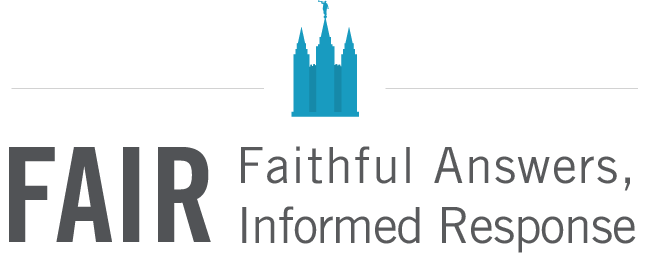
FAIR is a non-profit organization dedicated to providing well-documented answers to criticisms of the doctrine, practice, and history of The Church of Jesus Christ of Latter-day Saints.
(mod) |
|||
| Line 24: | Line 24: | ||
*Lavina Fielding Anderson (excommunicated) | *Lavina Fielding Anderson (excommunicated) | ||
*Avraham Gileadi (excommunicated, now back in full fellowship) | *Avraham Gileadi (excommunicated, now back in full fellowship) | ||
*Maxine Hanks (excommunicated) | *Maxine Hanks (excommunicated—now back in full fellowship as of 2012) | ||
*D. Michael Quinn (excommunicated) | *D. Michael Quinn (excommunicated) | ||
*Paul Toscano (excommunicated) | *Paul Toscano (excommunicated) | ||
This article is a draft. FairMormon editors are currently editing it. We welcome your suggestions on improving the content.
==
To see citations to the critical sources for these claims, click here
Six individuals were disciplined by the Church in September 1993. Supporters of those disciplined and critics of the Church have dubbed them "the September Six." The six individuals were:
Avraham Gileadi has never spoken publicly about the reasons for his excommunication, was never asked to retract any publications or statements, and has returned to full fellowship. He will not be discussed here.
The remaining five individuals have tended to claim that they were disciplined because of their writing and speaking on such matters as Church history, feminism, and abuses of power within the Church.[1] Church leaders and officials rarely make the reasons or evidences presented at disciplinary councils public. Thus, former members are able to claim whatever they like about excommunication without contradiction from the Church.
It is useful, however, to compare what these five individuals have said and done publicly, and what others have revealed about them, as we try to assess whether their excommunication was only about Church history or if other behaviors contributed to the unfortunate result.
Lavina Anderson is the only former member who continues to attend LDS worship services.
Quinn claims that his excommunication was the direct result of his historical research on the origins of Mormonism. He refused to attend his own disciplinary council, telling his stake president that it was "a process which was designed to punish me for being the messenger of unwanted historical evidence and to intimidate me from further work in Mormon history."[2]
Despite Quinn's belief that his Church discipline was all about his history, his stake president wrote back on 11 May 1993, saying "There are other matters that I need to talk with you about that are not related to your historical writings. These are very sensitive and highly confidential and this is why I have not mentioned them before in writing."[3]
For a detailed response, see: D. Michael Quinn
Janice Allred. See:
==

FAIR is a non-profit organization dedicated to providing well-documented answers to criticisms of the doctrine, practice, and history of The Church of Jesus Christ of Latter-day Saints.
We are a volunteer organization. We invite you to give back.
Donate Now